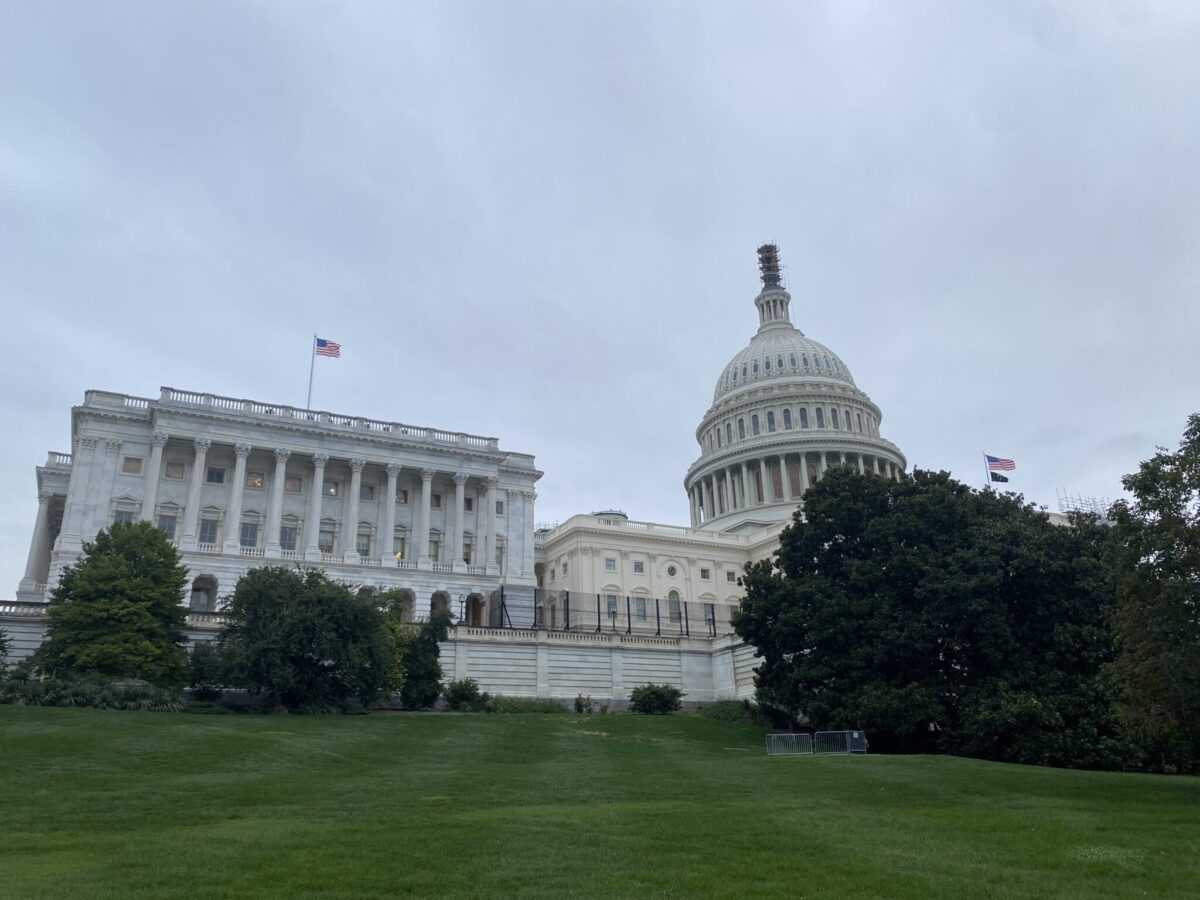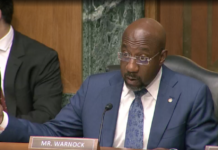
(GA Recorder) — The pressure to block a mining project at the edge of the Okefenokee National Wildlife Refuge is intensifying: U.S. Interior Secretary Deb Haaland has written a letter to Gov. Brian Kemp expressing her “serious concerns” about plans that she says threaten the largest blackwater swamp in the nation.
The letter from the director of the federal agency tasked with protecting America’s natural resources comes in the final stages of Twin Pines Minerals applying for permits from the state Environmental Protection Division. The company wants to dig for heavy metals along 582 acres located three miles away from the refuge that straddles the Georgia-Florida border.
“I strongly recommend that the State of Georgia not move ahead with approval for this proposed mine in order to ensure that the swamp and refuge are appropriately protected, consistent with all appropriate legal processes,” Haaland wrote to the Republican governor.
Haaland’s sentiments are echoed by conservationists, Okefenokee park officials, and many others who say mining will threaten a swamp that is home to endangered animals and 600 plant species and a popular tourist destination for paddlers and nature enthusiasts.
The Alabama-based company says it will use a mining process to remove titanium dioxide, a pigment found in white paint and plastics, without endangering one of the Southeast’s most diverse ecosystems.
The mining would occur along Trail Ridge, a hydrological divide between the Okefenokee National Wildlife Refuge and St. Marys River.
Haaland, who visited the swamp in the fall, said that the proposed mining activity poses serious risks to the long-term hydrology and future of the swamp’s ecosystem, concerns that have also been expressed by the U.S. Fish and Wildlife Service. Among the concerns is that the mining will lower the water level in the swamp while making the area more susceptible to severe droughts.
“We are not alone in this assessment, as some of the preeminent experts on this ecosystem and hydrology at the University of Georgia have also raised the alarm about the threat that this type of mining activity in this area poses to the swamp,” Haaland said in the letter.
She also raised concerns about the potential impact to cultural values, referring to the swamp’s role as part of the Muscogee (Creek) Nation ancestral homeland. Tribal members view the Trail Ridge landscape feature at the center of the mining proposal as a likely travel corridor used by their ancestors, she said.
The mining proposal, she wrote, “poses an unacceptable risk to the long-term hydrology and future of the swamp ecosystem and these cultural values.”
Haaland wrote the letter on Nov. 22, but the missive was not widely circulated until this week. Kemp’s office did not immediately respond to a request for comment Thursday.
Kemp has refrained from publicly giving his opinion on Twin Pines’ plans, leaving it to the EPD to make the final decision. A 60-day public comment period will be opened once the EPD decides the application process complete.
Among the responsibilities of the Department of the Interior are the management of wildlife refuges and other public lands, and providing protection to Native American tribes.
Steve Ingle, the president of Twin Pines, strongly rebuked Haaland’s letter as a desperate plea to the governor that he argued should be ignored. Ingle compared it to the U.S. Army Corps of Engineers’ reversing its decision to take back oversight of the permit process in order to get more input about the mine’s potential harm to Muscogee Creek Nation burial grounds.
“The attempts to distort the truth and shut down this project get more desperate as we get closer to a permit,” Ingle said in a statement. “It is an extremely sad reflection on those in power. It is just one more, non-fact-based, disturbing appeal by the Secretary of the Interior and is consistent with the emotional decision they made with respect to the U.S. Army Corps of Engineers to revoke the jurisdictional determination last year. That attempt was quickly pulled back because there was no legal basis for it.”
The Charlton County Commission has endorsed the mining plan, saying it will provide hundreds of good-paying jobs to the region. Ingle stated that the operations would be miles away from the refuge boundary.
“At the end of the day, everyone needs to remember, our so-called ‘mining’ is nothing more than temporarily extracting sands and soils to levels comparable to the height of a typical home roofline and replacing it with a covering of natural, native plant species,” he said.
Atlanta attorney Josh Marks compared Haaland’s letter to U.S. Secretary of the Interior Bruce Babbitt’s opposition in the 1990s to DuPont’s proposal to strip-mine titanium from 38,000 acres near the boundary of the Okefenokee.
The intense pressure from environmental groups and the federal government led to DuPont pulling its request in 1999.
Marks fought DuPont’s project as a Sierra Club activist then and is now fighting Twin Pines’ plans that could encroach farther into the Okefenokee with the company eyeing thousands more acres to mine in the future.
“It is great to see Sec. Haaland speaking out for the Okefenokee and against TPM’s dangerous project,” Marks said in a message. “This is now the second Interior Secretary I’ve met who has shown extraordinary leadership on the swamp’s behalf.
“Sec. Babbitt did the same thing 25 years ago in opposing DuPont’s (Okefenokee) proposal,” Marks said. “And hopefully Gov. Kemp will listen to her just as Gov. Zell Miller listened to Sec Babbitt, and say no to (Twin Pines).”
A bipartisan group of lawmakers have said they plan to refile legislation next year that would prevent further mining around the Okefenokee along Trail Ridge.
And the Southern Environmental Law Center is challenging in federal court the Corps’ decision in August to return control of the project to the state Environmental Protection Division.
Jamie Rappaport Clark, president and CEO of Defenders of Wildlife, praised Haaland for highlighting extensive research and advocating on behalf of scientists, elected officials and agency leaders.
“Digging near Okefenokee, or any wetland, is reckless and wrong-headed, period. Allowing any mining in the vicinity of Okefenokee could lead to a catastrophic draining of the swamp which would irreparably transform it from the vibrant and biodiverse wilderness we know today,” she said in a statement.
Rena Peck, executive director of the Georgia River Network, said Haaland’s input should be strongly taken into account by the state along with the tens of thousands of letters, emails and calls pressuring the governor’s office and EPD to deny the permit.
“As an outdoorsman we are hopeful the governor will save the swamp and the outdoor recreation economy that depends on it,” she said.
Ingle, however, argues the pushback has been hyperbolic since the early stages of the proposal when he said the U.S. Fish and Wildlife Service ignored science and instead “created hysteria” that became “full-blown partisan, weaponizing the regulatory process to achieve its objective.”
“That is not supposed to be the American way,” he said. “We have followed the regulatory process in good faith from the beginning with an abundance of science demonstrating provable methodologies and will continue to do so.”







